Upon hearing words such as ‘genre’ or ‘social activity,’ many different ideas can take shape--perhaps books or movies spring to mind when hearing the word genre, and parties or other leisurely activities arise when hearing the words social activity. There are a plethora of genres and social activities in the world, many of which may not even be recognized as such when experiencing them; as scholar Kerry Dirk describes: “By this point you might realize that you have been participating in many different genres—whether you are telling a joke, writing an email, or uploading a witty status on Facebook” (Dirk 253). However, within the scope of this assignment, I will explore a genre and social activity not often contemplated when these words arise, and that is the genre of video game livestreams, as well as the various components of those livestreamed gameplays, such as the digital community and interactions, which combine to form a rather unique social activity. As researcher Charles Bazerman elaborates, genres and social activities can be attributed to anything--even video game livestreams--as they are not limited to certain categories and can be examined in many ways:
Genres are only the types individuals recognize as being used by themselves and others. Genres are what we believe they are. That is, they are social facts about the kinds of speech acts people can make and the ways they can make them. Genres arise in social processes of people trying to understand each other well enough to coordinate activities and share meanings for their practical purposes. Genres typify many things beyond textual form. They are part of the way that humans give shape to social activity. (Bazerman 317)
The genre of livestreamed gameplays brings to life a unique community in which the creators of a given channel can actively interact with their viewers and vice versa, generating exciting and immersive ways to experience video games online via digital communication. Gameplay livestreams, along with the entertaining channels that create them, generate and enhance the experience of playing a video game, transforming it into a community experience that is filled with distinctive communication and reflexive interactions between the players and the viewers.
There is one medium in particular that encapsulates the aforementioned points, exemplifying the genre of livestreamed gameplays (video game livestreams) and the shaping of social activity within them. This site is GTLive, a livestreaming gameplay channel on YouTube, which is run by The Game Theorists, creators Matthew and Stephanie Patrick. This livestream venue comprises a very interactive and immersive community of viewers and players alike, coming together each stream to both interact and enjoy a wide range of intriguing video games.
GTLive: Digital Communication Methods and Livestream Genre Structure
The way their livestreams are structured, GTLive usually begins with a preface segment before they dive into the game itself, typically consisting of casual conversation and a general introduction to the game they will be playing on the given livestream. The flavor of casual conversation varies from episode to episode, and it serves as both an entertaining and informative transition into the actual gameplay. Casually conversing with each other, their fellow crewmates, and the GTLive viewer community, Matthew and Stephanie introduce a flow of discussion that carries over to the central content of the game they are playing. This style of mutual dialogue leads to various dialogue exchanges and personal stories across all parties present. In this conversational format, viewers of their livestreams are able to interact with the players in multiple ways, such as joining and watching the gameplay itself, or participating via comment options with the overall discussion at hand. Simply dubbed the ‘Chat’ by Matthew and Stephanie, these comment options consist of interaction with the channel via YouTube LIVE Chat comments–which can be accessed directly through the livestream itself–and tweets on the Twitter platform (under #GTLive), which are accessible to both the channel creators and viewers while livestreaming.
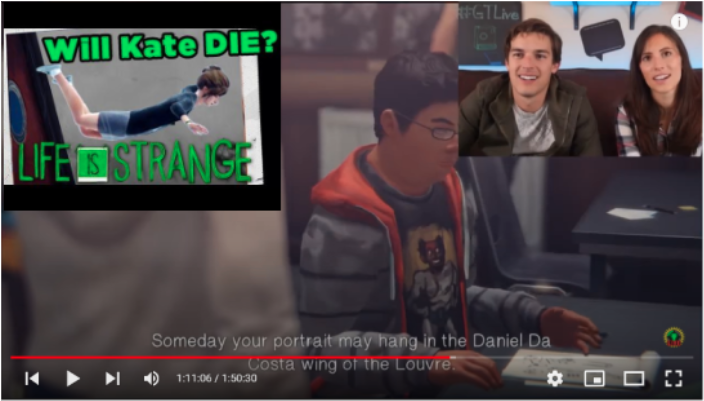
Fig. 1 Life is StrangePart 4. Click the link to view GTLive sharing fanart from the Chat during a livestreamed gameplay, from 1:11:06 to 1:13:13--GTLive - Life is Strange(Part 4) - #GTLive FanArt (when finished viewing the videos within this assignment, click the upper-left ‘go back’ arrow to return)
As is shown in the previous clip (Figure 1), the interactive methods of the Chat are used by GTLive viewers to share fanart (art made by fans of their favorite content and creators) which is enthusiastically appreciated by the players. In this instance, a viewer had submitted fanart on Twitter via #GTLive, knowing that Matthew and Stephanie both enjoy the TV show from which it originates. Noticing this, Stephanie highlights it, and Matthew connects it to the contents of the game:
Stephanie: “We actually have a really good one–yeah, AlbertTheDuck @FinnToGram, ‘I drew this for you guys knowing you’re a big fan of Gravity Falls.’”
Matthew: “See, I would say that AlanTheDuck [sic] @FinnToGram on Twitter has better drawings than this guy does.”
The connection made between the fanart and the livestream is an important factor of social activity within GTLive livestreams. It serves as a starting point for an interesting conversation between the players and viewers, often branching into various other discussions across the duration of the livestreams. Speaking of duration, while the length of each livestream tends to vary (usually between one to two hours), it ultimately depends on the contents of the game currently being played, along with whether the GTLive creators and their audience wish to see more of it. When a particular game is overtly enjoyed by players Matthew and Stephanie, along with the GTLive community, they will turn the gameplay into an ongoing series of livestreams, expanding upon their previous gameplays in episodic format.
Often, as is present through their Until Dawn and Life is Strangelivestreamed gameplays, GTLive interacts directly with viewers and asks them what they should do, what they would like to see, etcetera. This digital communication and interaction demonstrates various elements which researcher Charles Bazerman highlights, such as social activity and typification, which are signatures of their livestream community (316). As will be explored in the following sections, within the livestreamed gameplays, the meanings of the recurring references (typification) and conversational interactions (social activity) are unique to the GTLive channel and its digital community. These elements, combined with mutually compelling interactions, create a type of reflexive communication across a digital sphere within the specific context of livestreamed gameplays, creating an immersive atmosphere of entertainment, discussion, and discourse all in one place between the players and viewers.
Until Dawn Livestreams: GTLive Community, Gameplay Interactions & Social Activity
There are two distinct gameplays GTLive has livestreamed that revolved around making choices according to in-game dialogue prompts. These in-game choices were directly influenced by livestream communication between GTLive and their viewers in the ‘Chat’ (YouTube livestream comments and tweets). Until Dawn was the first major decision-based game they played through their livestream channel. The main players of the channel, Matthew and Stephanie, allowed viewers via Chat to select all the options and directly navigate them through the game, as they explain in the Introduction to their Until Dawn playthrough, part one (Figure 2):
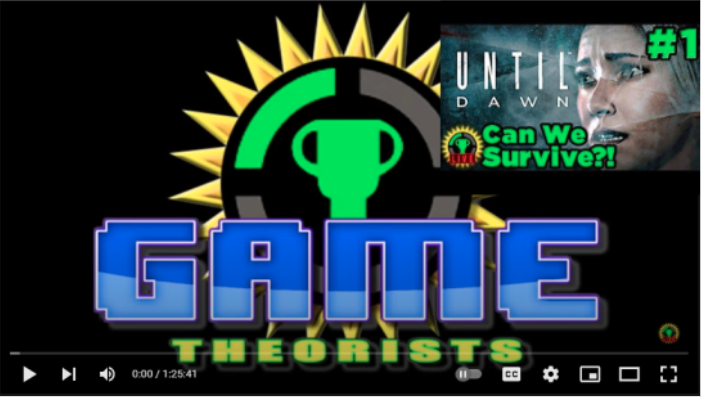
Fig. 2 Until Dawn Part 1. Click the link to view the Introduction, where Matthew & Stephanie explain the Chat dynamics, from 0:00 to 3:10--GTLive: Until Dawn - Can YOU Help Us Survive?! (Part 1) - Introduction
What is intriguing about these Until Dawn livestreams is that they are some of the earliest livestreamed gameplays GTLive has done, so a lot of the digital community, social facts, and reflexive interactions that are signature to the channel originated and evolved from this specific series. As the following game sequence displays, the main vein of communication revolves around Matthew, Stephanie, and fellow GTLive technician, Jason, discussing the options among themselves and the Chat. Whenever the game prompts the player to make a decision, the GTLive crew reviews YouTube Live comments and tweets (under #GTLive) to determine what they do next (Figure 3):
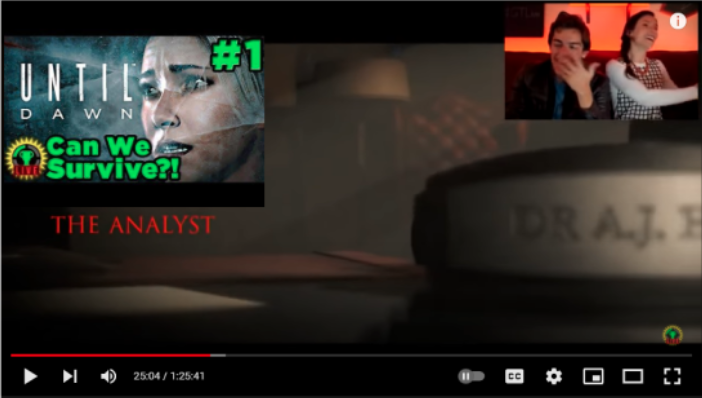
Fig. 3 Until Dawn Part 1, The Analyst. Click the link to view an in-game sequence where GTLive interacts with the Chat to choose options, from 25:04 to 31:51--GTLive: Until
Dawn - Can YOU Help Us Survive?! (Part 1) - The Analyst
Not only did the main interactive dynamics between the Chat and players result from the Until Dawn livestreams, but also well known references within the GTLive community, such as “don’t want to
miss a totem.” This reference originated from these Until Dawn livestreams, as one of the in-game
mechanics is to find hidden totem pieces (briefly mentioned by Matthew, Stephanie, and Jason in the above clip) which grants the player important insights about aspects of the game. Totems are often difficult to uncover–in the above clip, it is buried in the snow where the player can easily pass it if not careful–but finding them reveals information that provides more context to the plot and lore of the game. Within Until Dawn, the information given by totems is premonitions that are beneficial or detrimental depending on their in-game decisions. Given the difficulty which accompanies finding these secret totems, combined with the uncertainty of their meaning, extensive communication
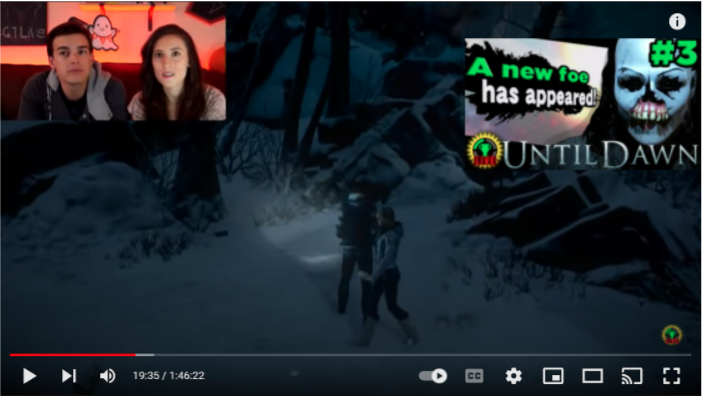
Fig. 4 Until Dawn Part 3 totem. Click the link to view an example of GTLive finding an Until Dawn totem, from 19:34 to 20:26– GTLive: Until Dawn - DEATH Has Arrived! (Part 3) - Totem Premonition
between the GTLive players and viewers occurs to both uncover and interpret them. Soon enough, the “don’t want to miss a totem” phrase became a social activity staple of GTLive livestreams, with the players and viewers keeping a sharp eye on in-game settings to catch them. This generates a dynamic of
reflexive interactions that are prominently showcased throughout the rest of the Until Dawn gameplays as well as in future gameplays, such as the one which will be discussed next, Life Is Strange.
Life is StrangeLivestreams: GTLive Community, Gameplay Interactions and Social Activity
A second major decision-based game GTLive played via livestream was Life Is Strange, marking an exciting new adventure for the livestream community, as this game was highly anticipated by GTLive viewers. However, unlike their aforementioned livestreamed gameplay of Until Dawn, Matthew and Stephanie decided to make the in-game choices mainly by themselves rather than leaving the choices solely to the Chat.

Fig. 5 Life is StrangePart 1. Click the link to view the Introduction to the first GTLive livestream of Life Is Strange, from 0:51 to 3:05--GTLive - Life is Strange- A STORM is Coming (Part 1) - Introduction
This alternation of perspective between the players and the viewers launched a new dialogue within the gameplay, leading to multifaceted discussions between the GTLive crew and the Chat as they pave their way through the game. Additionally, this adds another element to the reflexive interactions of the livestreams: the reactions of the Chat to the in-game choices Matthew and Stephanie make, opening up lively discourse and stories. With this flow of conversation beginning to take shape, the livestreams become more solidified “sites of social action” where reflexive interactions can thrive (Devitt, Bawarshi & Reiff 542). With the growing socialization, where both the GTLive players and viewers freely exchange anecdotes as well as various gaming tactics, the gameplays serve as a learning environment for everyone present.
Within these Life is Strangelivestreams, reflexive interactions and social facts continue to evolve. Communication transforms within the GTLive channel through influential discussion between the players and viewers, as is evidenced throughout their interactive experimentation with choice-based games. Alongside the transforming interactions, there is an influx of references to other streams, as was briefly mentioned in the previous Until Dawn section. These recurring references and callbacks of earlier streams are examples of what Charles Bazerman refers to as ‘typification’ throughout his research: “This process of moving to standardized forms of utterances that are recognized as carrying out certain actions in certain circumstances and to standard understandings of situations is called typification” (316). A main instance of this is the briefly aforementioned totem reference, which originated from the Until Dawn livestreams of GTLive and resurfaces throughout the Life Is Strange livestreams.
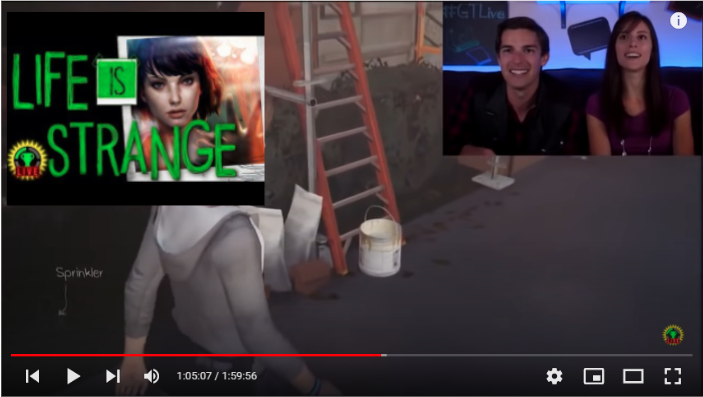
Fig. 6 Life is Strange totem typification. Click the link to view an example of recurring reference typification, from 1:05:07 to 1:06:08--GTLive - Life Is Strange (Part 1) - Totem Typification
Though the totems were quite literal throughout their previous Until Dawn gameplay–which is what prompted Matthew to point out the totem statue seen in Life Is Strange–the reference more specifically alludes to the information the ‘totem’ of a given game provides when discovered, as was described earlier. Uncovering these totems is significant as Matthew and Stephanie, The Game Theorists, use the lore to lay the foundation for many of their thought-provoking theories, and a lot of the plot points are discovered through the cooperation of players and viewers via livestreams. Understanding this inside reference through typification while reiterating it through Chat comments or tweets builds a sense of connected humor as well as an overall sense of community and shared experience within the livestream. These social and conversational factors have become central to the social activity of the GTLive livestream community, transcending one gameplay to the next.
Conclusion
The genre of livestreamed gameplays (or video game livestreams) is not as thoroughly explored or discussed in the same depth as movies or books, leaving much to be studied and enjoyed. Though there are a plethora of factors to discuss in the realm of digital communication and livestreamed gameplays, I attempted to describe some of the most prominent ones within the context of the GTLive channel. Having been a subscriber of their channel for years, I was excited to share my observations within this assignment about the various communication methods and social activity fostered through the unique experience GTLive creates with their livestreams. Even though it may seem like I have included a lot, there is so much more to explore and enjoy on their YouTube channel; I have only scratched the surface with the examples and references I shared in this assignment. To cover more factors would most likely result in a dissertation, as there are many dimensions that make the digital communication and social activity of GTLive so entertaining. Experiencing the genre of livestreamed gameplays, the community, commentary, reflexive interactions, etc., reveals a distinct sense of social activity and digital communication that is not usually discussed. I highly recommend browsing their channel to experience an immersive and engaging digital community alongside the enthralling social activity that is woven throughout the livestreams.